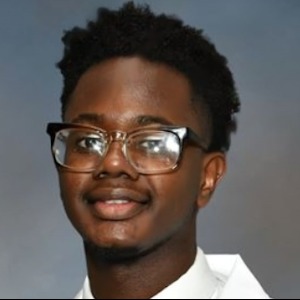Title : Strengthening orthopedic infrastructure in sub-sahara Africa: A review of current barriers and prospective models for success
Abstract:
Musculoskeletal trauma and impairments are the most common cause of severe physical disability worldwide. In Sub-Saharan Africa, fracture incidences can exceed 1,500 per 100,000 people. Despite this, access to orthopedic care remains severely limited due to a combination of workforce shortages, insufficient implants, lack of imaging capacity and inadequate rehabilitation services. In this review, we aim to review current hurdles to orthopedic infrastructures in Low- and Middle-Income Countries (LMICs) and spotlight strategies aimed at strengthening surgical and trauma capacity.
A literature review was conducted using peer-reviewed studies published between 2014 and 2024. Databases used include PubMed, Springer, BMJ Global Health, and ResearchGate. A total of 12 articles were selected based on their relevance to orthopedic delivery systems, workforce limitations, gaps in infrastructure, access to care and cost-effectiveness.
Significant deficits were reported throughout the region. A multi-country survey of 267 hospitals in the College of Surgeons of East, Central and Southern Africa (COSECA) region revealed that fewer than 10% of hospitals had a reliable supply of internal fixation implants while only 35% had rehabilitation units. In Sierra Leone, surgical teams follow resource restricted surgical algorithms leading to reliance on external fixators and K-wire for procedures. A systematic review of ankle fractures found that clinical outcome data were disproportionately. reported from urban centers, limiting the generalization to public and rural hospitals.
In an MSF led initiative, use of external fixators led to reduced amputation rates among patient with open fractures from 100% to 21% by training non-specialist local surgeons under supervision. In Tanzania, a proposed Orthopedic Center of Excellence is projected to yield a 13.19-fold social return on investment. It was demonstrated that fracture surgery in Malawi averts disability at a cost of $215 per DALY, while intramedullary nailing saved $5,682 per QALY compared to traction in Uganda. Finally, in Zimbabwe and South Africa, qualitative research revealed that rehabilitation services are often described as “inadequate or nonexistent”, revealing a major gap between surgical care and long-term recovery.
Orthopedic Trauma infrastructure in Sub-Saharan Africa is under-resourced but scalable solutions are emerging. Peer-reviewed evidence supports the impact of targeted training programs, investment in cost-effective surgical strategies, and long-term infrastructure development. Further research is needed to develop scalable rehabilitation models and integrate patient centered care into national orthopedic planning.



